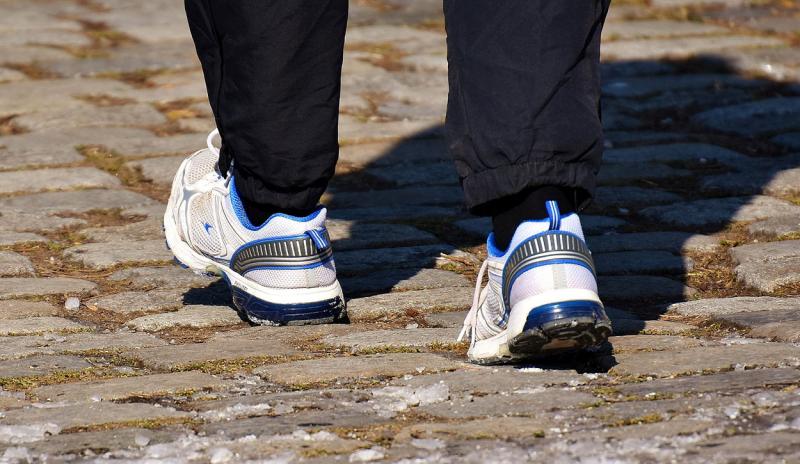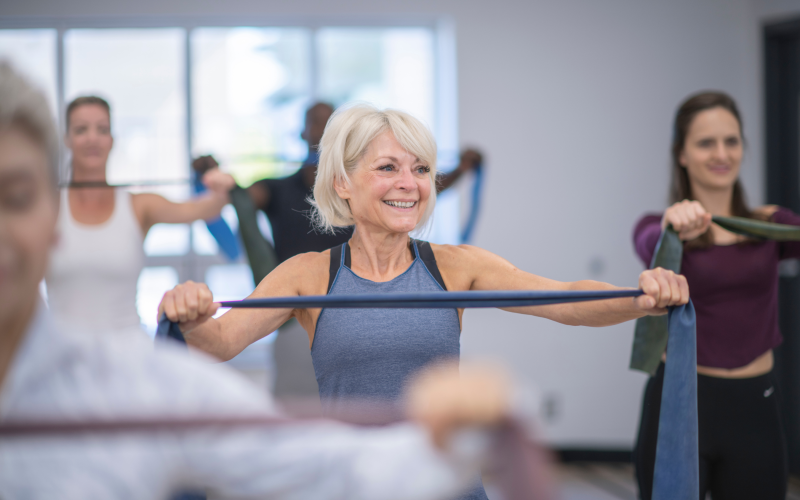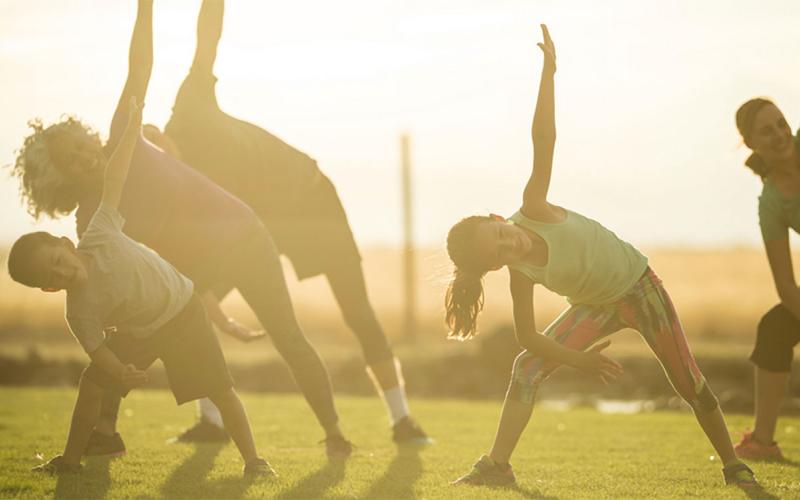
Written by Ryan Folley under the direction and review of Nikki Prosch, former SDSU Extension Health & Physical Activity Field Specialist.
Choosing the right shoes for physical activity, whether walking or running, can be an overwhelming process with so many options available. Wearing a shoe that is designed to fit your feet, while also fitting the type of exercise you plan to engage in is significant for many reasons. First, the right shoe can increase comfort and enjoyment when active. Second, the right shoe can also reduce foot health issues such as athlete’s foot or bunions. And third, it can help prevent injuries that may sideline you from exercising like shin splints, runner’s knee, or lower back pain.
To improve comfort and reduce the chance of injury, it is important to consider several factors when choosing your shoes.
Factors to Consider
Type of Exercise
Typically, certain shoes are designed for certain activities. Thus, it is not recommended to use one shoe for multiple types of activity. For example, running shoes are often more cushioned in the heel and toe of the shoe to absorb the foot impact that is greater in running compared to walking. When selecting your shoe, be sure to double check what activity the shoe is designed for (walking, hiking, running, etc.).
Arch Type
Arches are typically described in three ways:
- Flat or low arches essentially have no arch in the foot and the entire foot is in contact with the ground.
- Medium arches have a slightly raised arch in the middle-foot, are moderately flexible feet and are deemed as ‘normal’ arched.
- High arched feet are more rigid and rest higher off the ground in the middle of the foot.
While medium arches can have common foot problems, both low and high arched feet are more susceptible to injuries but can be prevented by wearing the shoe that is designed based off the fitting style similar to gait types.
Gait Type
Gait is defined as the manner in which the foot impacts and lifts off the ground during running or walking.
The three types of gaits include:
- Neutral: The ankle remains straight or rolls slightly inward when the foot strikes the ground.
- Overpronation: The ankle rolls inward when the foot strikes the ground, impeding the impact of absorption.
- Supination: The ankle rolls slightly outward when the food strikes the ground.
All three forms of gaits can be diagnosed by having gaits analyzed or by looking at the treadwear on the bottom of the shoes, where overpronation has greater wear on the inside, supination has greater wear on outside, and neutral has evenly distributed wear.
The undesirable impact of absorption during running or walking can be improved by choosing the shoe with the correct fitting style, as discussed in the 'Arch Types' and 'Types of Athletic Shoes' sections of this article.
Types of Athletic Shoes
Running shoes typically consist of neutral, stability, and motion control that have variation in flexibility, cushion, and stability to adjust for each type of individual’s feet.
- Neutral running shoes are recommended for medium or high arched feet and those with supination gait because of their midsole cushion support and shock absorption.
- Stability running shoes are recommended for low and flat arched feet that overpronate while running.
- Motion Control running shoes are recommended for runners with moderate to severe overpronation which have flat outer soles to help evenly distribute foot impact.
Walking shoes differ from running shoes in that they often have more cushion in the heels with less cushion in the front because the heel often impacts greatest during walking.
Tips for Picking Your Shoes
- While online shopping for shoes could save a few dollars, the potential for long term costs associated with choosing improper shoes that lead to injuries and discomfort may ultimately exceed the cost of shopping in person.
- Consider going to a local shoe or athletic department store, they may have knowledgeable staff that can assist with choosing the right shoe for you!
- While it may be enticing to choose a shoe based off its appearance, it may not be the best fitting for your feet. Choose a shoe that matches your fashion and foot style.
- Timing of trying on shoes for the best fit: our feet change size throughout the day so it’s important to try on shoes when are feet are the largest, being at the end of the day or after workouts.
- Bring a pair of worn in athletic shoes to the store so staff can observe the type of wear on your shoe to make the best recommendation based on your gait type.
Resource:
10 Points of Proper Shoe Fit, American Orthopaedic Foot & Ankle Society.


